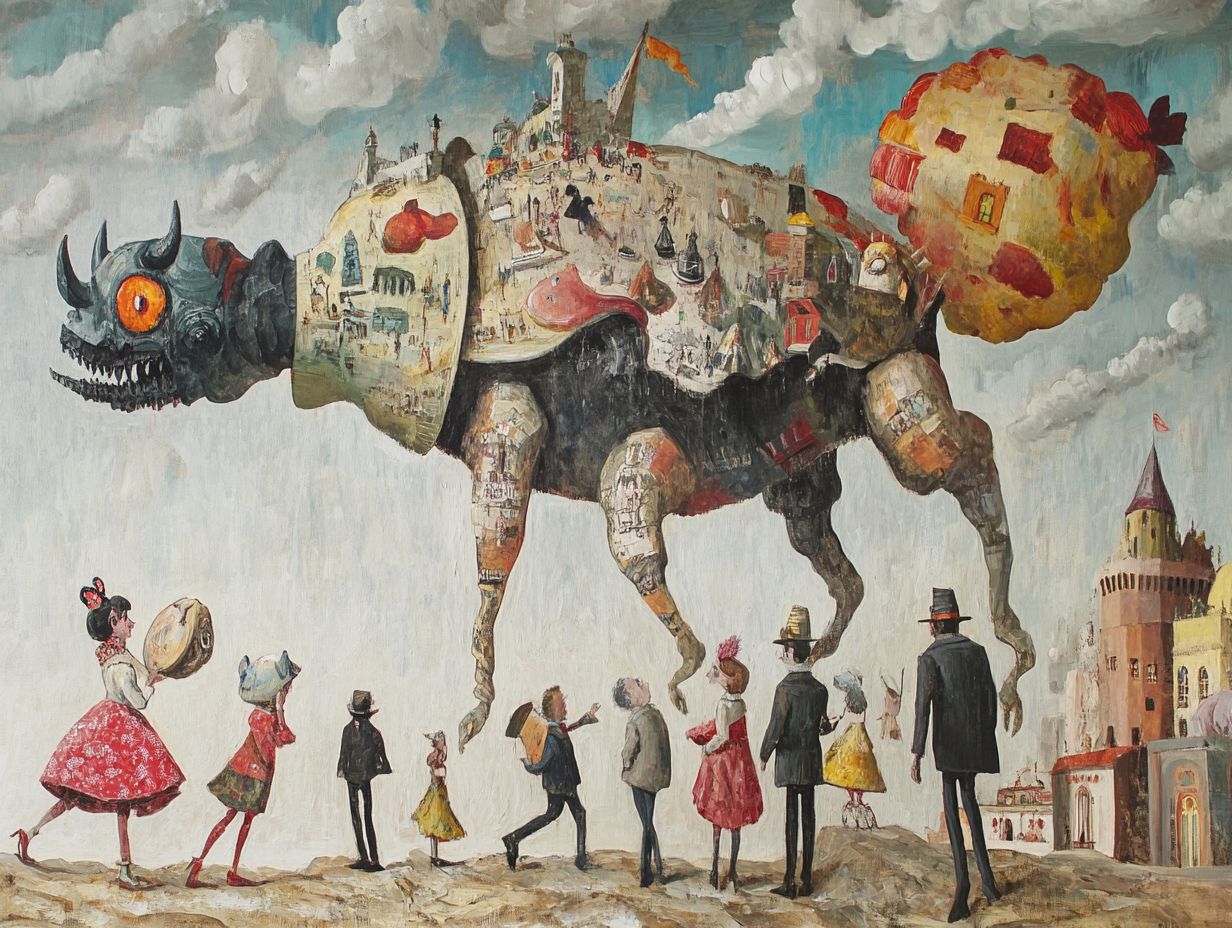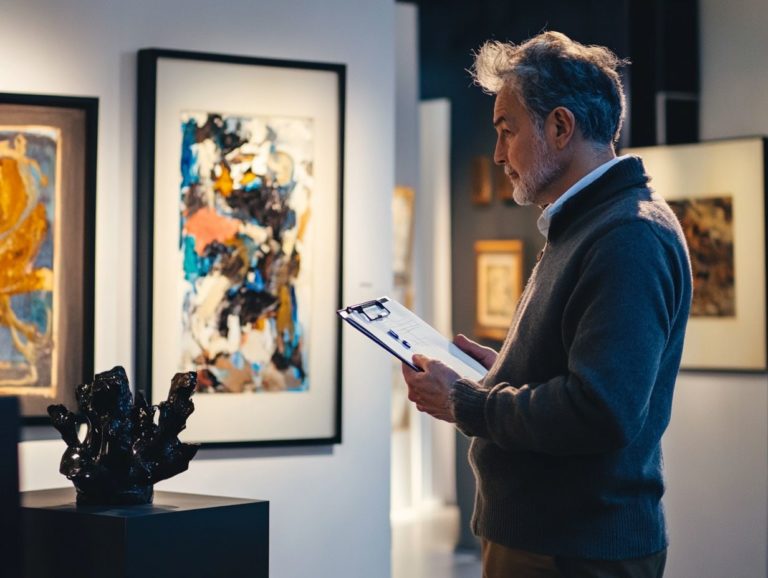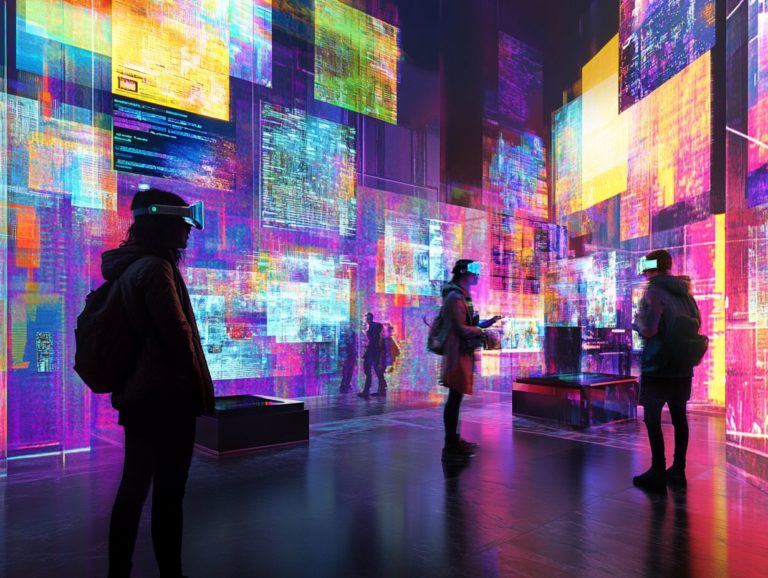The Evolution of Collectible Art Through Decades
Collectible art boasts a rich and captivating history that spans centuries. It reflects the evolution of cultural shifts and artistic movements.
From its early manifestations to the influential artists who shaped its value, art has always served as a canvas for expression and investment. The 20th century marked a significant surge in collectible art, driven by shifting perceptions and the emergence of new styles.
In today’s digital age, fresh opportunities and challenges arise, changing how you experience art. Get ready to dive into the thrilling journey of collectible art!
Contents
- Key Takeaways:
- The Beginnings of Collectible Art
- The Rise of Collectible Art in the 20th Century
- Collectible Art in the Digital Age
- The Future of Collectible Art
- Frequently Asked Questions
- How has collectible art evolved over the past decades?
- What are some major trends in collectible art over the past decades?
- How has the role of technology impacted the evolution of collectible art?
- What factors influence the value of collectible art?
- How has the role of collectors evolved in the world of collectible art?
- What Does the Future Hold for Collectible Art?
Key Takeaways:
The roots of collectible art can be traced back to early forms such as cave paintings and ancient sculptures, which were highly valued by their societies.
The 20th century saw a rise in the recognition and appreciation of collectible art, with new trends and styles emerging.
The digital age brings new opportunities and challenges for collectible art. Technology impacts the creation, distribution, and valuation of art.
The Beginnings of Collectible Art
The history of collectible art begins with the inception of fine art. It weaves a rich tapestry that includes significant movements like the Renaissance. This period laid the essential groundwork for artistic appreciation and the practice of collection.
Early art collecting was influenced by cultural developments. Collectors sought pieces that demonstrated extraordinary skill and offered aesthetic pleasure and historical significance.
Early Forms of Collectible Art
Collectible art emerged as societies began to recognize the aesthetic and cultural significance of fine art. Different civilizations approached art collection in distinctive ways, shaped by their cultural beliefs and the skill of their artists.
Take the European Renaissance, for example. Artists were celebrated not just for their skill but for the profound emotions their works conveyed. Patrons eagerly built collections that symbolized their status and nurtured a deeper appreciation for artistry.
Art reflects the changing values of society. Collections often show personal tastes influenced by historical events and movements.
Significant Artists and Movements
Throughout history, significant artists and movements have reshaped the landscape of collectible art. Think Renaissance, Impressionism, Modernism, Surrealism, and Abstract Expressionism. Each period is defined by groundbreaking contributions from artists who redefined creativity.
Impressionism, for example, was led by Claude Monet and Pierre-Auguste Renoir. This movement explores light and emotional experience, breaking free from earlier styles. Monet s captivating landscapes invite you to lose yourself in their fleeting beauty, while Renoir captures the joy of social interaction.
The audacious works of Andy Warhol revolutionized perceptions of consumerism and celebrity. He seamlessly blended art with everyday life, reshaping modern narratives in the art world.
The Rise of Collectible Art in the 20th Century
The 20th century ushered in a remarkable expansion of the art market, fueled by movements like Modernism and Pop Art. These transformative currents redefined cultural development and revolutionized artistic philosophy.
Join us as we uncover the exciting stories behind collectible art!
Shifts in Perception and Value
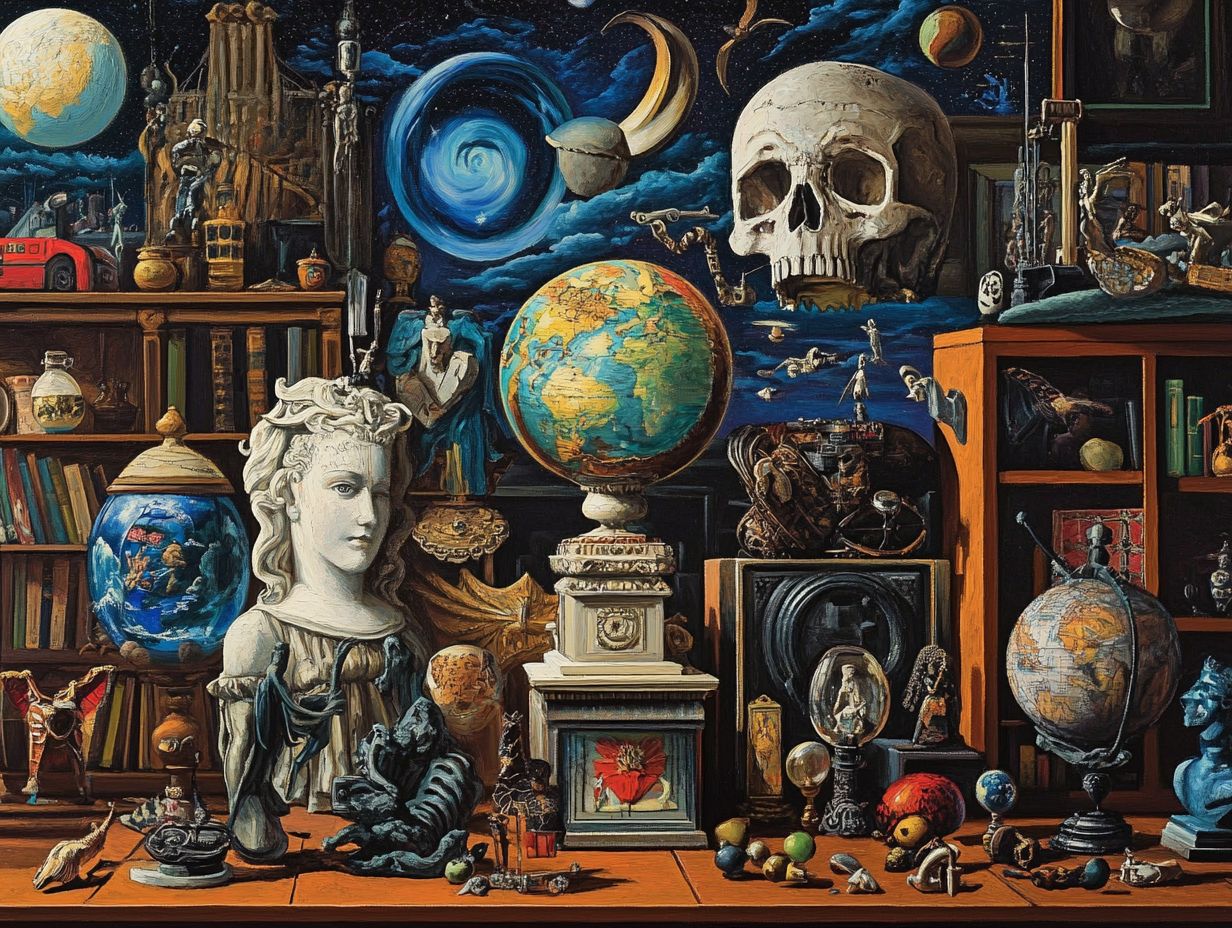
Perception and value of art are shaped by cultural movements and emotional experiences. As society evolves, we see a growing appreciation for various artistic forms.
This appreciation elevates not just famous masterpieces but also modern art that speaks to individuals personally. Art institutions have become essential platforms for exhibition and dialogue.
The rise of art collecting has transformed from a niche interest into a respected pursuit. It encourages you to invest in pieces that reflect your own stories.
These changes highlight the dynamic relationship between art, culture, and emotional engagement.
Emerging Trends and Styles
Emerging trends and styles in the 20th century, especially Modernism, Surrealism, and Pop Art, introduced innovative ways of artistic expression. These movements pushed the limits of creativity while redefining technical skill.
Artists experimented with new materials and processes, stepping away from traditional realism. Modernism embraced bold colors and inventive compositions.
Surrealism’s dreamlike imagery required mastery of techniques that explored the subconscious. Pop Art playfully engaged with consumer culture, reshaping how we perceive and interact with art.
As these styles evolved, their influence spread across the global art market. Collectors began to seek works embodying both innovation and emotional depth.
Collectible Art in the Digital Age
In today s digital landscape, the collectible art market has transformed significantly due to technological advancements. This evolution is redefining how art is created, bought, and sold.
New avenues and possibilities are opening up for both artists and collectors.
The Impact of Technology
Technology has transformed the art market, making sales more accessible for artists and collectors. Digital platforms have allowed exhibitions to reach a global audience that was once unreachable.
Online auctions cater to everyone from seasoned collectors to enthusiastic newcomers, allowing bidding from home. Art institutions are evolving by integrating digital experiences that enrich their physical exhibits.
Virtual tours and interactive galleries invite deeper exploration and engagement. This shift democratizes access to art and ushers in a new era of interaction.
New Opportunities and Challenges
The digital age presents new opportunities and challenges for you as an art collector. The rise of digital art brings innovative avenues for acquisition but raises concerns about authenticity.
This transformation reshapes traditional art institutions, compelling them to reevaluate their roles in an increasingly online environment. You will face significant challenges like copyright violations, complicating the ownership of digital works.
The influence of global culture introduces diverse perspectives and styles into the digital landscape, enriching it with a fusion of traditional techniques and modern technologies.
As these dynamics evolve, the definition of art expands, urging you and institutions to navigate this uncharted territory with thoughtfulness and care.
The Future of Collectible Art
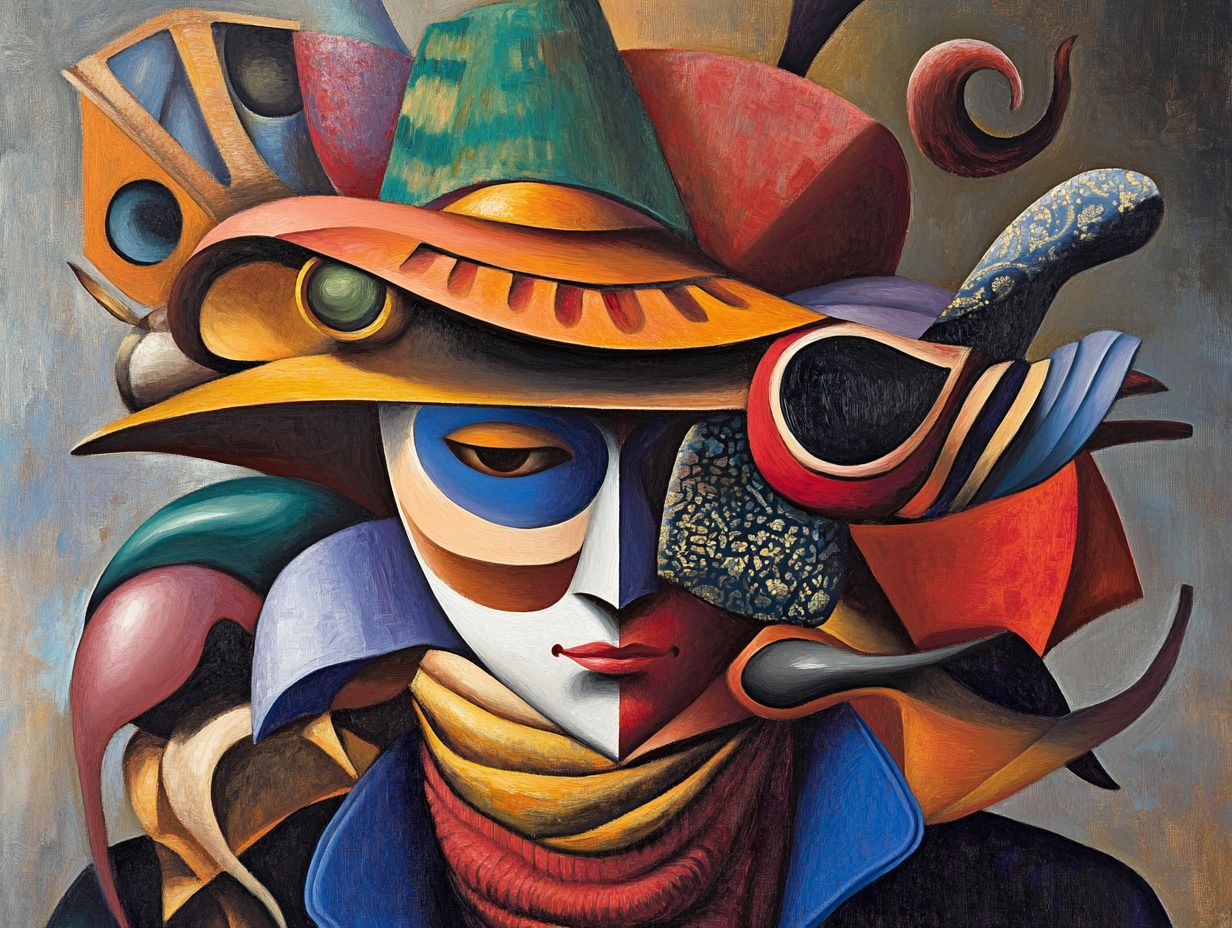
The future of collectible art is on the brink of transformation. Advancements in technology and changes in cultural dynamics are reshaping the way you appreciate art and engage with the art market.
Predictions and Projections
Predictions for the art market in the years ahead indicate a notable shift toward contemporary art. Cultural influences are shaping emerging trends.
As you seek to diversify your collection, you’ll notice the landscape of art sales is changing rapidly. Auction houses and art institutions are adapting to these changes, recognizing the need to cater to your sophisticated tastes.
This evolution encourages you to explore pieces that resonate with current societal narratives and evoke profound emotional responses.
The integration of technology in galleries is elevating your viewing experience. You can now engage with art in ways that surpass traditional appreciation.
The rise of online platforms is making it easier for you to discover and invest in the emotional power of contemporary works. Art is becoming more accessible to new audiences.
Innovations and Changes in the Market
Innovations in the art market, especially within digital art, are transforming how you exhibit and collect art. Significant changes in traditional practices are underway.
These advancements are not merely enhancing accessibility; they also challenge you to navigate the ever-evolving landscape of art ownership. With virtual galleries and augmented reality experiences, you can immerse yourself in captivating pieces from the comfort of your home.
This shift compels you to reevaluate value. You find yourself balancing interests in physical artworks with the allure of emerging digital formats like NFTs, or non-fungible tokens, which are unique digital assets.
Ultimately, the mix of old ways of collecting art and new technology is reshaping your relationship with artists, fellow collectors, and the broader art community. It encourages you to embrace a more innovative approach.
Frequently Asked Questions
How has collectible art evolved over the past decades?
Collectible art has undergone significant changes over the years, adapting to societal, cultural, and technological shifts, as highlighted in the rise of collectible art investments.
While art has always been a form of expression and a reflection of the times, the methods of creating, collecting, and valuing it have evolved drastically.
What are some major trends in collectible art over the past decades?
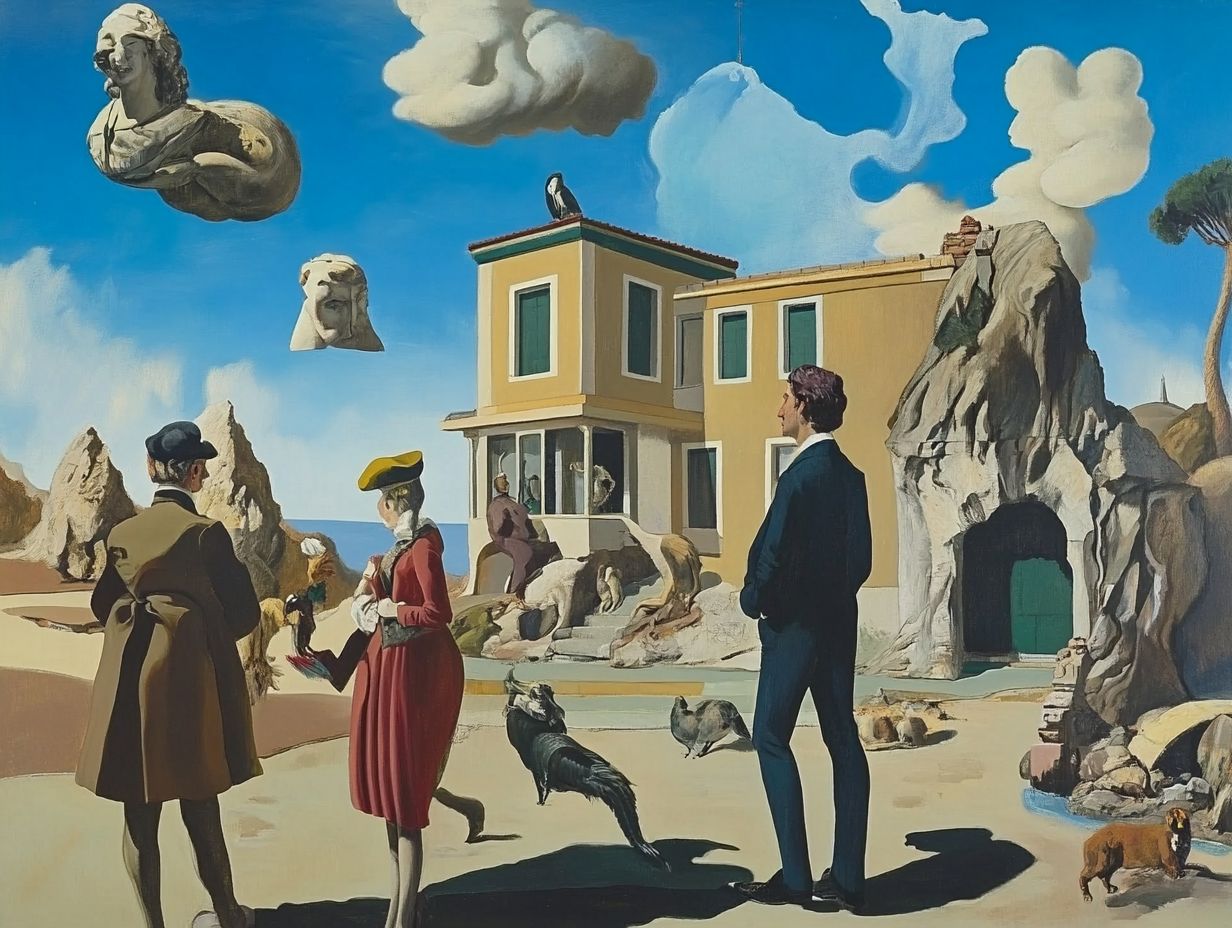
In the 1960s and 1970s, pop and conceptual art gained popularity. Artists like Andy Warhol and Yoko Ono revolutionized the art scene.
In the 1980s, postmodernism and the rise of the art market brought about a new wave of highly prized pieces. In the 2000s, digital art and social media began to influence the production and distribution of collectible art.
How has the role of technology impacted the evolution of collectible art?
The rise of technology has greatly impacted the creation, valuation, and accessibility of collectible art.
With the emergence of digital art and the internet, artists have new mediums to explore, and collectors have new ways to acquire and display art. Technology has also made the art market more global, allowing for easier communication and transactions between collectors and galleries.
What factors influence the value of collectible art?
The value of collectible art is influenced by various factors. These include the artist’s reputation and career trajectory, the rarity and condition of the piece, and the demand from collectors.
Other factors such as market trends, cultural significance, and historical context can also impact the value of collectible art.
How has the role of collectors evolved in the world of collectible art?
Collectors have played a crucial role in the evolution of collectible art. They shape trends and drive the market.
In the past, collectors were mostly wealthy individuals who acquired art for personal enjoyment or investment. However, with the democratization of the art market and the rise of online platforms, more people from diverse backgrounds can now collect and appreciate art.
Explore the world of collectible art it’s an exciting time to engage with the art community!
What Does the Future Hold for Collectible Art?
Collectible art is evolving. Trends show that digital art and unique digital items are making waves in the market.
We can expect exciting shifts towards more sustainable and socially conscious art. There will also be greater diversity and inclusivity among the artists and collectors involved.

